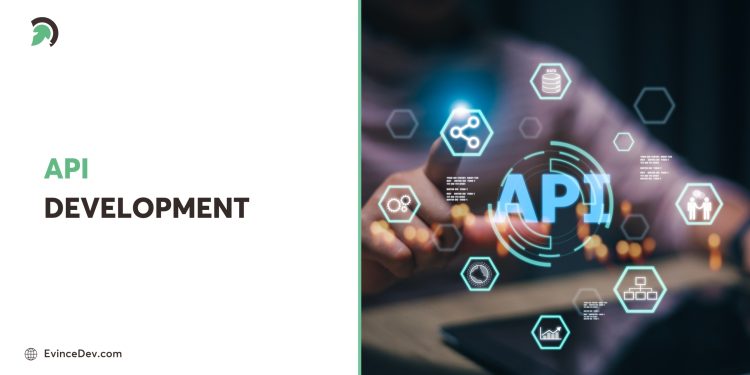In the IT sector and among tech enthusiasts, the term ‘API‘ is widely recognized. APIs have become increasingly vital in the modern economy due to growing consumer demands and advancements in information networking. Today, many applications have transitioned to API-based architectures. APIs are a part of our daily lives, whether we’re buying tickets, logging into Facebook, or making PayPal payments. By developing robust and scalable APIs, businesses can enhance their applications, streamline development processes, and drive innovation.
In fact, according to research, about 90% of developers use APIs in some way.
What is API Development and Why Is It Important?
API development is a cornerstone of modern software engineering, enabling different systems and applications to interact and exchange data seamlessly. The API development process encompasses a series of steps that include designing, creating, testing, and maintaining Application Programming Interfaces (APIs). APIs are sets of rules and protocols that allow software applications to communicate with one another, effectively acting as intermediaries that facilitate data exchange and functionality integration.
API Development Is Crucial for Many Reasons
Facilitates Third-Party API Integration
APIs enable applications to connect with external services and platforms. This capability is vital for incorporating third-party services, such as payment gateways, social media integrations, or mapping services, into applications. For instance, integrating a payment API like Stripe or PayPal allows developers to add payment functionalities without building them from scratch. It can enhance user experience and broaden the application’s capabilities.
Promotes Efficiency
The use of APIs streamlines development processes by leveraging existing services and components. Developers can use APIs to access functionalities or data provided by other platforms, reducing the need to develop these elements independently. This not only accelerates development time but also minimizes costs, as developers avoid duplicating efforts.
Enhances Scalability
APIs support the scalability of applications by enabling them to interact with other systems and services. For instance, a social media platform can scale its functionality by integrating with additional APIs for new features, analytics, or user management. This modular approach allows applications to grow and adapt to new requirements without extensive rework.
Fosters Innovation
It enables developers to build on top of existing technologies, driving innovation. APIs allow developers to create novel applications and services by providing access to new functionalities or data sources. For example, integrating machine learning APIs can enable applications to incorporate advanced features like natural language processing or image recognition.
Improves User Experience
APIs enhance user experience by integrating diverse services and features into a single application. For example, integrating a weather API can provide users with real-time weather updates within an app, while a mapping API can offer location-based services. This seamless integration enriches the user experience and adds value to the application.
Supports Automation
It allows automation by allowing applications to interact with other systems programmatically. This capability is essential for automating repetitive tasks, such as data synchronization between systems or processing large volumes of data. For example, an e-commerce platform can use APIs to automate inventory management and order processing, improving efficiency and accuracy.
Terminologies of API Development
Understanding key terminologies related to API development is essential for grasping the concept:
API (Application Programming Interface)
A set of rules and protocols that defines how software components should interact. APIs allow different applications to communicate and share data.
API Development Framework
Tools and libraries that provide a structured approach to creating and managing APIs. Popular frameworks include Django REST framework (Python), Express.js (Node.js), and Spring Boot (Java). These frameworks offer pre-built components and best practices for developing APIs efficiently.
python
# Example of defining an API endpoint using Django REST framework
from rest_framework.views import APIView
from rest_framework.response import Response
from rest_framework import status
class HelloWorld(APIView):
def get(self, request):
return Response({“message”: “Hello, World!”},
status=status.HTTP_200_OK)
Endpoint
A specific URL or URI (Uniform Resource Identifier) where an API can access resources. Each endpoint corresponds to a different function or data set.
json
# Example of an API endpoint for retrieving user data
GET /api/users/{user_id}
Authentication
The process of verifying the identity of a user or application accessing the API. Common methods include API keys, OAuth tokens, and JWT (JSON Web Tokens).
json
# Example of using Bearer Token for authentication in HTTP headers
Authorization: Bearer
Rate Limiting
Restricting the number of API requests a user or application can make in a given period to prevent abuse and ensure fair usage.
json
# Example of rate limiting headers in API responses
X-RateLimit-Limit: 1000
X-RateLimit-Remaining: 999
X-RateLimit-Reset: 3600
Tools for API Development
Several tools and platforms facilitate the API development process:
Postman
A popular tool for designing, testing, and documenting APIs. Postman allows developers to create and send HTTP requests, view responses, and automate testing.
json
// Example of a POST request in Postman
POST /api/login
{
“username”: “user”,
“password”: “pass”
}
Swagger
An open-source framework that provides tools for designing, building, and documenting APIs. Swagger UI allows developers to visualize and interact with API endpoints.
yaml
# Example of Swagger API definition
openapi: 3.0.0
info:
title: Sample API
version: 1.0.0
paths:
/users:
get:
summary: Get a list of users
responses:
‘200’:
description: A list of users“
API Gateway
A server that acts as an API front-end, handling requests, enforcing policies, and routing them to appropriate backend services. Examples include AWS API Gateway and Google Cloud Endpoints.
Insomnia
A REST client for designing, debugging, and testing APIs. Insomnia offers a user-friendly interface for creating and managing API requests.
Must-Have Features of an Efficient API
An efficient API should have the following features:
Clarity
Clear and comprehensive documentation is essential for helping developers understand and use the API effectively. Documentation should include details on endpoints, request and response formats, authentication methods, and error handling.
markdown
# API Documentation Example
## Endpoint: /api/users
### GET Request
Retrieves a list of users.
#### Response
“`json
[
{
“id”: 1,
“name”: “John Doe”
}
]
Consistency
Consistent design and naming conventions across the API ensure a predictable and user-friendly experience. Following established standards and best practices helps maintain uniformity.
Performance
APIs should deliver fast response times and efficient processing to ensure a smooth user experience. Implementing caching strategies and optimizing queries can enhance performance.
python
# Example of caching in Django REST framework
from django.core.cache import cache
def get_user(user_id):
user = cache.get(f’user_{user_id}’)
if not user:
user = User.objects.get(id=user_id)
cache.set(f’user_{user_id}’, user)
return user
Security
Robust security measures are essential to protect data and ensure that only authorized users can access the API. Implementing authentication and authorization mechanisms, such as OAuth and API keys, helps secure API interactions.
Scalability
An API should be designed to handle increased loads and adapt to growing demands. Implementing rate limiting and load balancing can help manage traffic and maintain performance.
Best Practices for Building the Right API
To create a successful API, consider the following best practices:
Design First:
Start with a well-thought-out design that addresses user needs and integrates seamlessly with other systems. Utilize API development frameworks to guide the design process and ensure adherence to best practices.
python
# Example of API design using Flask (Python)
from flask import Flask, jsonify
app = Flask(__name__)
@app.route(‘/api/hello’, methods=[‘GET’])
def hello_world():
return jsonify({“message”: “Hello, World!”})
if __name__ == ‘__main__’:
app.run(debug=True)
Documentation
Provide thorough and accessible documentation that explains how to use the API. Use tools like Swagger and Postman to generate and maintain documentation, ensuring it remains up-to-date.
Testing
Implement rigorous testing to validate the API’s functionality and performance. Use automated testing frameworks and tools to test endpoints, error handling, and edge cases.
python
# Example of using pytest for API testing
import pytest
from app import app
@pytest.fixture
def client():
with app.test_client() as client:
yield client
def test_hello_world(client):
response = client.get(‘/api/hello’)
assert response.status_code == 200
assert response.json == {“message”: “Hello, World!”}
Versioning
Manage changes and updates to the API by implementing versioning. This practice helps maintain backward compatibility and provides a smooth transition for users when updates occur.
json
# Example of versioned API endpoint
GET /api/v1/users
Security
Implement strong authentication and authorization mechanisms to protect sensitive data. Utilize industry-standard practices such as OAuth, JWT, and API keys to secure API interactions.
Monitor and Analyze
Regularly monitor API usage and performance to identify and address potential issues. Use analytics tools to gather insights into API usage patterns and optimize accordingly.
Custom API Development
Consider custom API development when integrating unique functionalities unavailable through standard APIs. Custom APIs allow for tailored solutions that meet specific business requirements.
python
# Example of a custom API endpoint for retrieving user profiles
@app.route(‘/api/custom_profiles/’, methods=[‘GET’])
def get_custom_profile(user_id):
profile = get_custom_profile_from_db(user_id)
return jsonify(profile)
Conclusion
Incorporating API development into your strategy is essential for leveraging technology effectively. By understanding and implementing best practices, using the right tools, and focusing on essential features, you can develop APIs that enhance functionality, drive innovation, and improve user experience. For businesses seeking expertise in custom API development, IT consulting services, or web app development services, partnering with a proficient mobile app development company like EvinceDev can provide the necessary support to build robust and scalable APIs tailored to your needs.






